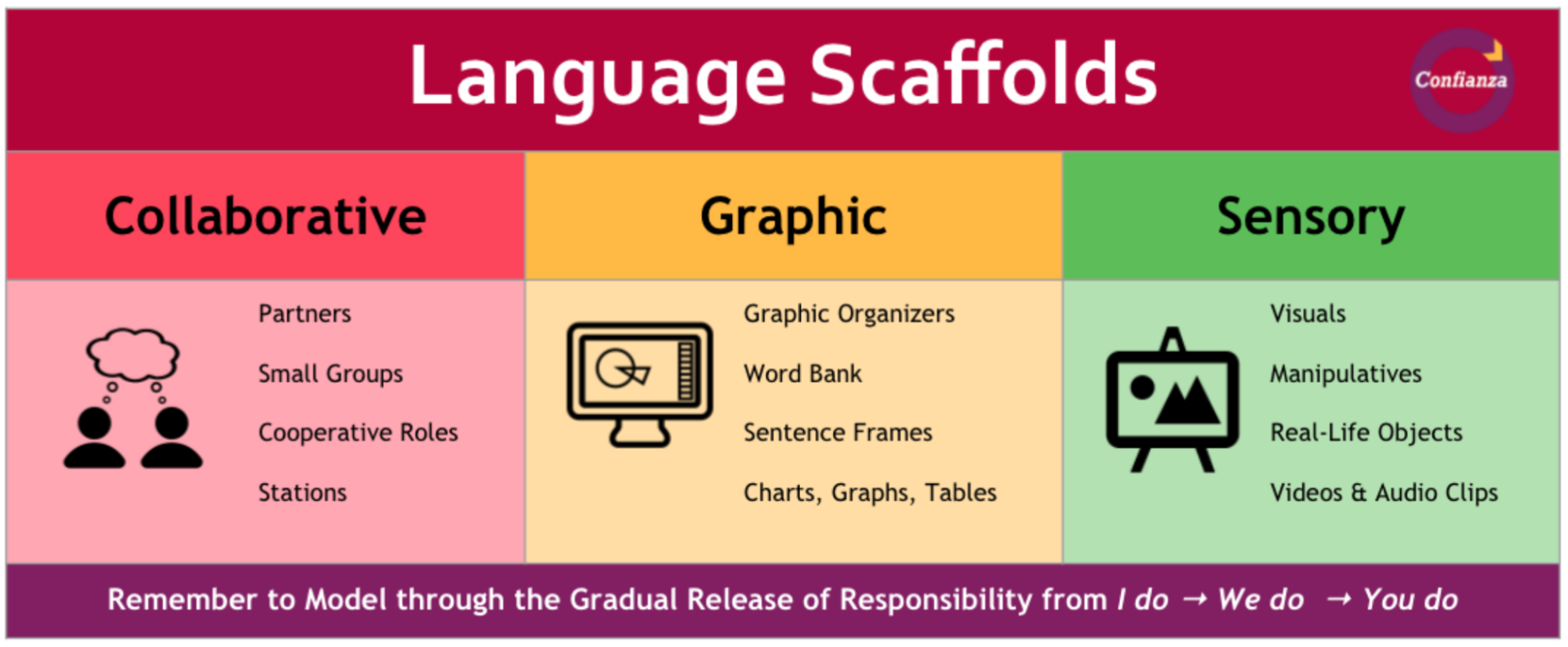Comprehensible Input for Busy Teachers
by Marjorie Kirstein
You’re a busy teacher who wants to do the best for your students. If you could provide only one accommodation for your English learners, what would be the most effective and powerful? That one thing is comprehensible input.
If you work with English learners (also known as multilingual learners) or have training in language acquisition, you’re probably familiar with the concept of Comprehensible Input (CI). Or you may have heard the term, but you are not sure what it means or why it is important.
Comprehensible input is language input that learners can comprehend even when they don’t understand all the words and structures in text or speech. It allows them to acquire language without explicit instruction. The concept of comprehensible input comes from Stephen Krashen’s Theory of Second Language Acquisition. Krashen’s Input Hypothesis is one of the most influential theories of second language acquisition.
There is ample evidence that CI is the most important factor in learning a language. Knowing this, teachers can ensure they provide comprehensible input without putting in hours of preparation time. A few simple steps will ensure that your students who are learning English understand what they hear and read, allowing them to acquire language naturally.
Comprehensible is not only an easy strategy to incorporate, it is essential for English learners. “Comprehensible input remains the foundation of all language acquisition,” (Lightbrown and Spada,2013). Its importance cannot be understated.
How Can I Learn About Comprehensible Input?
Teacher talk, text, feedback, and even body language all can and should be made comprehensible.
As we say at Confianza, amplify language, don’t water down the content. So, how can you, as a busy and conscientious educator, provide this input that is vital to student language acquisition?
Bryce Hedstrom’s review of research on second language acquisition supports the effectiveness of CI for language acquisition and suggests specific methodologies for providing CI:
Provide aural or written comprehensible input
Comprehensible reading in the target language improves acquisition a lot
Comprehensible input methods include T.P.R.S. (Teaching Proficiency through Reading and Storytelling), narrative paraphrase a.k.a. Movietalk, and free voluntary reading
Sarah Ottow’s article Tips for Comprehensible Instructional Language, gives concrete guidance on making all types of academic input comprehensible so students can receive it and apply it to their learning. Plus, for tips on how to embed comprehensible input within instructional materials, check out a blog from Ottow and coaches she works with, Making Complex Texts Comprehensible for English Learners and ALL Learners.
No Prep/Low Prep CI
Giving students comprehensible input doesn’t have to be perfect, nor does it have to be excessively time-consuming. According to language acquisition theory, the target language doesn’t have to be 100% comprehensible, just mostly understandable. There are a variety of ways to provide CI, and most don’t require pre-planning.
Reduce barriers (utilize background knowledge, L1)
Speak clearly and write key words on the board
Use patterns and repetitions of structures and phrases
Explain academic tasks
Put vocabulary in context
Check for understanding
Reword wordy or unclear language
Provide visual supports
Concept Instruction for All Proficiency Levels
When general education teachers need to address content standards, they can also provide CI by aligning the teaching of concepts with the students’ proficiency levels. This approach requires somewhat more planning time. In their White Paper, Ybarra and Hollingsworth outline ways to teach concepts contained in grade-level standards to students of varying proficiency levels:
Support concept definitions and big ideas with labeled examples
Directly teach language items that pertain to all proficiency levels, such as the most commonly used verbs and simple verb tenses
Adjust complexity of grammar and reading materials to account for varying proficiency levels
Substitute different visuals depending on the grade level
While concept development stays the same for students at a given grade level, the input varies in complexity for students depending on their level of language proficiency.
Using the direct approach ensures that time spent in content classes contributes to ELs’ language acquisition.
Start With a Lesson Plan
Using comprehensible input informs the lessons of Claudia Elliott, a World Language teacher, at every step. On her website she shares her approach to using CI to move students from input to output
Planning
Start with the questions 1) What story do I want to share with my students? and 2) How can I make it comprehensible?
Decide what language is needed to tell the story: identify frequent verbs and related vocabulary
Instruction
Tell the story orally (oral input)
Give lots of oral checks for comprehension
Rewrite the story together (students and teacher discuss and write what they learned)
Reread the story together
Formative assessment
After listening and reading the story a lot of times, move to a supported output activity where students write about the topic of the story
In Claudia’s own words, “Our students only acquire the language if they read or listen to a great amount of language they comprehend.”
For further learning
Elliott, C. Hedstrom, B. Lightbrown & Spada (2013). How Languages Are Learned, 4th edition. Oxford University Press.
Ottow https://ellstudents.com/blogs/the-confianza-way/tips-for-comprehensible-instructional-language

